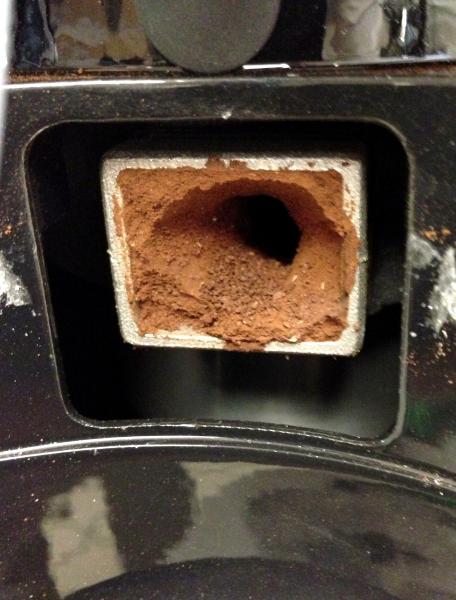July 2014 - Why Is The First Cup Not So Good
Date Posted:1 July 2014
Retained Grounds
 |
Have you ever noticed the first cup of coffee in the morning is pretty much rubbish - jet black liquid, minimal crema, no body, lacking flavour and sweetness. Are you guilty of giving this 1st dodgy cup of the day to your partner whilst keeping the 2nd cup for yourself.........that one which pours with a rich river of red and brown elixir, topped with a thick spongy golden crema and tastes delightful. Why is your 2nd, or 3rd cup so much better than the 1st cup ? The answer is a combination of approx. 10% due to brew temperature and 90% due to the volume of retained grinds in your grinder.
|
What happens when you grind a coffee bean ?
When coffee beans are ground, the essential volatiles are released and the small particles are then exposed to rapid oxidisation (exposure to oxygen).This is when aromatics are at their peak and the ability to extract the maximum total dissolved solids (TDS) is also at the peak.
There is a common belief that 15 minutes of exposure to oxygen and the ground coffee is basically dead. Well, that's pretty much a truth and not something to be submitted to the Myth Busters team to prove.
Ground coffee needs to be used immediately - even the 15 minute rule is way too long.
Every grinder retains ground coffee. Some are worse than others and there are literally just a couple of special grinders (in limited supply) that have almost zero ground coffee retention.
Generally speaking, the larger the grinder, the greater the volume of retained grounds.
The design of grinders is not perfect. As the burrs (whether they are flat blade or conical) typically revolve horizontally and ground coffee is "pushed" by the action of grinding more coffee horizontally across a "ledge" that can be anywhere from 7mm to 35mm in size before it reaches the exit chute.
This ledge holds retained grounds and whilst you have beans in the hopper, the newly ground coffee will force this coffee sitting on the ledge to fall down the exit chute.
As grinding also produces a degree of static, some grinders also accumulate ground coffee around the interior of the exit chute that requires some physical "tapping" to dislodge.
When you grind coffee beans to fill or dose your portafilter, the moment you switch-off the grinder, there can be anywhere from 10g to 40g of ground coffee sitting inside of the equipment.
A few hours later, or the next morning, when you grind coffee beans, the freshly ground coffee is sitting behind the retained grounds and it is the retained grounds that are dosed into your portafilter - that's right, ground coffee that has been sitting exposed to oxygen for up to 24 hrs.
How do you resolve the Retained Grinds issue ?
Some fussy coffee enthusiasts measure out a precise dose of coffee beans and then grind this batch for their coffee. They leave the grinder running for moments longer so any retained grinds can be pushed out.
Others run the grinder for around 10 or more seconds (depending upon your grinder model and performance) to flush out retained grinds before making their cup of coffee.
This is effectively flushing (and wasting) the retained grinds, but the result in the cup can be astonishing.
At home, I have a number of grinders on my kitchen bench (much to my darling wife's frustration). Some of these are commercial grinders and I will run 20 - 35g of coffee out of these grinders before making my first cup to ensure any retained grinds are flushed out.
If you are worried about wasting coffee, then do what the enthusiasts do and never keep any coffee beans in your hopper - measure each dose as you need it. The downside with this approach is the extra time to weigh each shot and of course your grinder can operate around 20 - 25% less effective when there are not enough beans in the hopper applying downward pressure onto the horizontal movement of the burrs.
When you don't have enough beans in your grinder hopper, the beans can bounce and skip instead of being ground which can result in around 15% variance in particle size.
Bottom line is - always think about retained grinds and how to eliminate or flush out of your grinder.



